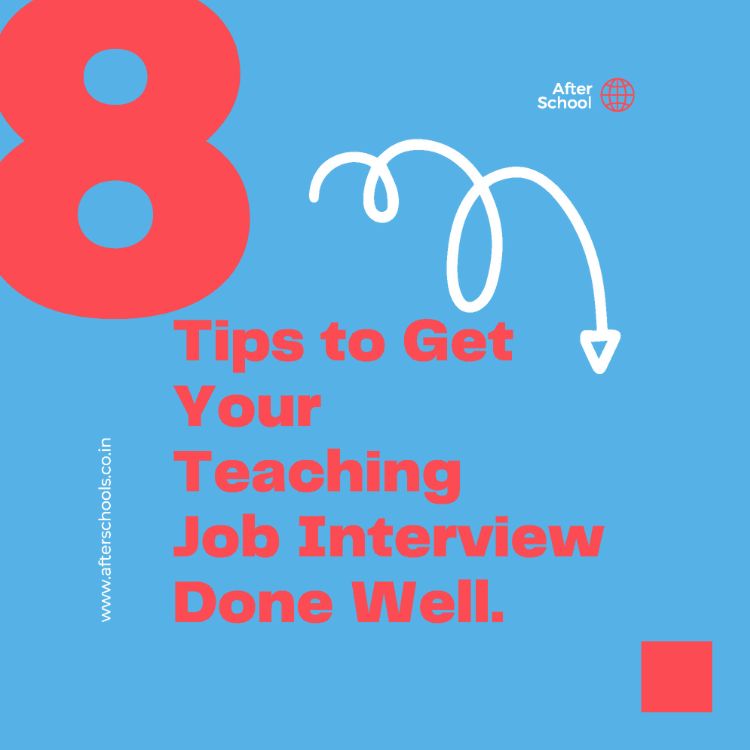Learn the detailed step-by-step process of jobs by impressing panels in your Nursery Job interviews.
1. Why do you want to become a pre-primary teacher?
9 Solved Job Interview Questions
I have been passionate to take up a teaching job as I love working with kids. It gives me a lot of joy. It’s been my dream to become a pre-primary teacher to make a positive impact in their lives.
2. What is your experience working with young children?
I have worked with young children in various settings such as volunteering in a kindergarten, student teaching in a preschool, and being a nanny. Through these experiences, I have gained a deep understanding of the unique needs and abilities of young children. I have learned how to create a nurturing and stimulating environment for them to learn and grow.
3. How do you handle challenging behaviour in the classroom?
I believe that challenging behaviour is a form of communication and I try to understand the underlying cause. I use positive reinforcement and redirect children's behaviour using appropriate and consistent consequences. I also involve the child in finding a solution and involve parents in the process.

4. How do you plan and implement the curriculum in your classroom?
I plan and implement the curriculum by following the guidelines set by the state and school district. I also consider the interests and needs of the children in my class. I use a variety of teaching methods such as hands-on activities, games, and technology to make learning fun and engaging.
5. Can you give an example of a lesson you have taught and how you adapted it for different learning styles?
One lesson I taught was on the topic of "Plants." I adapted the lesson for different learning styles by incorporating visual aids for visual learners, hands-on activities for kinesthetic learners, and group discussions for auditory learners. I also provided multiple ways for children to show their understanding such as writing, drawing, and verbal presentations.
6. How do you use technology in the classroom?
I use technology in the classroom to enhance the learning experience and make it more interactive and engaging. I use educational apps, interactive whiteboards, and digital tools to create an immersive learning environment. I also teach children digital literacy and safe internet practices.
7. How do you involve parents and families in their child's education?
I involve parents and families in their child's education by holding regular parent-teacher conferences, sending weekly newsletters, and encouraging them to volunteer in the classroom. I also keep parents updated on their child's progress and involve them in decision-making when necessary.
8. How do you address and support children with special needs?
I address and support children with special needs by providing accommodations and modifications to the curriculum, and creating an inclusive classroom environment. I also work closely with the special education team and involve parents in the process.
9. How do you create a safe and inclusive classroom environment?
I create a safe and inclusive classroom environment by fostering mutual respect and understanding among children. I also teach children about different cultures and backgrounds and encourage empathy and kindness. I also have clear and consistent rules and consequences to maintain a safe and orderly classroom.
How do you handle a baby in a class who is crying continuously?
When dealing with a crying baby first check the situation to determine the reasons for crying. A few reasons can be hunger, fatigue, discomfort, or a need for a diaper change. On you discover the cause address the issue promptly and with passion.
A few actions you can take to handle a crying baby are
1. Take the baby to a quiet place.
- If the baby is hungry, offer a bottle of milk, or some food.
- If the baby needs a diaper change, change it immediately.
- If the baby is tired, lay them down for sleep.
- If the baby is feeling discomfort, try soothing them with a gentle touch.
2. Keep the baby close to the parent or a trusted adult.
- If the parent is not available, consider pairing the baby with a trusted teacher's aid or volunteer.
- This will help the baby feel more secure and comforted, and will also provide the teacher with an extra pair of hands to help with the baby's care.
3. Communicate with the parents.
- Keep the parents informed of their child's behavior and work with them to find a solution.
- Parents may have some insight into the child's behavior that could be helpful.
4. Create a calm and soothing environment.
- Keep noise and distractions to a minimum and use soft lighting and calming music to create a peaceful atmosphere.
- When the baby is settled, consider incorporating some gentle movement or massage to help them relax.
5. Be patient and compassionate.
- Crying is a normal and healthy way for babies to communicate, and it is important to respond with patience and understanding.

As a teacher, it is important to be flexible and to work with the parents and caregivers to find the best approach for each child.
10 easy ways to get a job in Nursery Teachers Training
- Obtain the necessary qualifications: To be considered for a nursery teacher training job, you will need to have the appropriate qualifications such as a degree or diploma in early childhood education or nursery teacher training.
- Pass any necessary certification exams: Many countries require teachers to pass certification exams, such as the Teacher Eligibility Test (TET) or the Central Teacher Eligibility Test (CTET) in India, to be eligible for teaching positions.
- Gather relevant experience: Gaining experience working with young children, such as through internships or volunteer work, can make you a more competitive candidate for nursery teacher training positions.
- Build a portfolio: Create a portfolio of your work, including lesson plans, student work samples, and evaluations from supervisors.
- Network: Attend job fairs, events, and workshops in your field, and network with other teachers and professionals in the field.
- Apply to open positions: Look for open positions in nursery schools, kindergartens, and other early childhood education settings. Many schools have their recruitment process and post open positions on their website or job portals.
- Customize your resume and cover letter: Tailor your resume and cover letter to the specific job and organization you are applying to. Highlight your qualifications and relevant experience and demonstrate how you meet the requirements of the position.
- Prepare for the interview: Research the school or organization and be prepared to discuss your qualifications, experience, and how you can contribute to the success of the school.
- Follow up: After the interview, send a thank you note and follow up if you haven't heard back from the school.
- Update your resume in job portals like Naurkri,Monster,Shine,Indeed, and many other.
How to get a high salary as a Pre-Primary Teacher?
Salaries in teaching jobs have been on the rise. The best way to get good salaries is to do a diploma course from NTT Institute. Thereafter get a job and working experience of few years. Once you have the working experience then you get qualified to apply in top ranking schools and international schools that pay very high salaries. To know about how to increase your salaries feel free to call us.
Nursery Teacher Jobs in India
Nursery Teacher Jobs in India: A Guide to a Rewarding Career
Welcome to the wonderful world of Nursery Teacher Jobs in India! As a future Nursery Teacher, you are embarking on a journey filled with endless possibilities and opportunities. In this article, we will be exploring the ins and outs of this rewarding career path, providing you with a comprehensive guide to what it takes to succeed as a Nursery Teacher in India.
What is a Nursery Teacher?
A Nursery Teacher is an educator who is responsible for the care and education of young children. These teachers play a crucial role in laying the foundation for a child's future development, helping them to develop their social, emotional, cognitive, and physical skills. As a Nursery Teacher, you will be expected to create a warm, nurturing, and safe learning environment that promotes creativity, curiosity, and exploration.
Why is Nursery Teaching a Good Career Option?
Nursery Teaching is an excellent career option for those who are passionate about working with children and helping them grow and develop. With the growing demand for high-quality early childhood education, there has never been a better time to consider a career as a Nursery Teacher in India. Not only is this career path emotionally fulfilling, but it also provides you with a stable job and income, and the potential for growth and advancement.

What are the Qualifications for Nursery Teachers in India?
In India, there are no set qualifications for becoming a Nursery Teacher. However, there are several courses and certifications available, such as the Nursery Teachers Training (NTT) program or the Pre-Primary Teachers Training (PPTT) program, to help you with the skills. These courses are designed to provide you with a comprehensive understanding of early childhood development, teaching techniques, and best practices in the classroom.
What are the Job Prospects for Nursery Teachers in India?
The demand for Nursery Teachers in India is growing at an incredible rate, and job prospects in this field are highly favorable. With the government's emphasis on improving the quality of early childhood education, there are numerous opportunities available for Nursery Teachers in government-run schools, private schools, and childcare centers.
If you have a passion for working with children, a commitment to lifelong learning, and the desire to make a difference in the world, then a career as a Nursery Teacher in India is the perfect path for you. So, go ahead and take the first step towards a fulfilling and rewarding career today!
How to make a lesson plan for pre-primary teachers
Making a lesson plan for pre-primary teachers is an important step in creating a structured and effective learning environment for young students. Here's a step-by-step guide to creating a lesson plan:S
- Identify the objective: Start by defining the main objective of the lesson. This will give you a clear idea of what you want the students to learn and what you need to focus on.
- Choose appropriate activities: Based on the objective, choose activities that will help the students achieve them. These activities could include songs, stories, games, art projects, or other hands-on experiences.
- Plan the flow: Decide on the order in which the activities will be conducted. This will ensure a smooth flow of the lesson and prevent confusion.
- Prepare materials: Gather all the materials that you will need for the activities, such as props, paper, markers, etc.
- Establish a routine: Incorporate a routine into the lesson plan. This could include opening activities, transition activities, and closing activities.
- Consider the students’ needs: Keep in mind the age, abilities, and interests of the students while creating the lesson plan. Make sure that the activities are age-appropriate and engaging.
- Make adaptations: Be open to making adaptations to the lesson plan as needed. This could include modifying the activities or changing the order based on the student’s response to the lesson.
- Evaluate: Finally, evaluate the lesson plan to see if it was effective in achieving the objective. This will help you to make improvements for future lessons.
